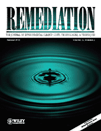
Remediation-The Journal of Environmental Cleanup Costs Technologies & Techniques
Scope & Guideline
Exploring Technologies that Shape a Greener Future
Introduction
Aims and Scopes
- Environmental Cleanup Technologies:
The journal extensively covers a range of technologies designed for the remediation of contaminated environments, including advanced oxidation processes, adsorption techniques, and bioremediation methods. - Emerging Contaminants:
A significant focus is placed on the study and remediation of emerging contaminants, particularly per- and polyfluoroalkyl substances (PFAS), highlighting the need for innovative approaches to tackle these persistent pollutants. - Sustainable Practices:
The journal promotes sustainable remediation techniques that minimize environmental impact while ensuring effective cleanup of contaminated sites, integrating principles of green chemistry and resource recovery. - Field Applications and Case Studies:
Real-world applications and case studies are central to the journal's scope, providing insights into the effectiveness of various remediation strategies in different environmental contexts. - Regulatory and Policy Implications:
The journal discusses the regulatory frameworks and policy implications surrounding remediation practices, emphasizing the need for compliance and the role of legislation in guiding remediation efforts.
Trending and Emerging
- PFAS Remediation Technologies:
There is a marked increase in research focused on the development and evaluation of technologies for the remediation of PFAS, reflecting growing regulatory scrutiny and public concern regarding these substances. - Sustainable and Green Remediation:
Emerging themes in sustainable remediation practices are gaining prominence, with a focus on minimizing ecological footprints and utilizing renewable resources in cleanup efforts. - Bio-based Remediation Approaches:
Research exploring the use of bio-based materials and biological agents for remediation is on the rise, as these methods offer eco-friendly alternatives to traditional chemical treatments. - Integrated Remediation Strategies:
An increasing trend towards integrated approaches that combine multiple remediation techniques is evident, promoting efficiency and effectiveness in addressing complex contamination scenarios. - Impact of Climate Change on Remediation:
The influence of climate change on remediation practices is an emerging theme, with studies exploring how changing environmental conditions affect the behavior of contaminants and the efficacy of remediation technologies.
Declining or Waning
- Traditional Remediation Techniques:
There has been a noticeable decrease in publications focusing on conventional remediation methods, such as simple excavation or chemical treatment, as newer, more efficient technologies gain traction. - General Water Quality Assessments:
Research centered on generic water quality assessments is becoming less frequent, with a shift towards more specific studies addressing targeted contaminants like PFAS or heavy metals. - Non-innovative Case Studies:
The frequency of non-innovative case studies that do not introduce new methodologies or technologies has waned, as the journal increasingly prioritizes novel contributions that offer fresh insights into remediation practices.
Similar Journals
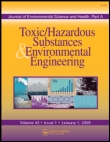
JOURNAL OF ENVIRONMENTAL SCIENCE AND HEALTH PART A-TOXIC/HAZARDOUS SUBSTANCES & ENVIRONMENTAL ENGINEERING
Advancing knowledge at the intersection of health and environment.JOURNAL OF ENVIRONMENTAL SCIENCE AND HEALTH PART A-TOXIC/HAZARDOUS SUBSTANCES & ENVIRONMENTAL ENGINEERING, published by TAYLOR & FRANCIS INC, stands at the forefront of research in the dynamic fields of environmental science and public health. With an ISSN of 1093-4529 and an E-ISSN of 1532-4117, this journal serves as a pivotal platform for disseminating significant findings regarding toxic substances and their impact on the environment and human health. It is categorized in the Q3 quartile for both Environmental Engineering and Medicine in 2023, showcasing its relevance within these disciplines. Researchers will find valuable insights in the 90th rank among 197 in the Environmental Science and Engineering category, placing it in the 54th percentile among its peers. While access options remain traditional rather than open-access, the journal is dedicated to serving as an essential resource for professionals and academics engaged in understanding the intricate connections between hazardous materials and environmental safety. The journal has consistently published critical research since its inception in 1978 and is committed to advancing knowledge up to 2024, making it a crucial venue for ongoing discussions and developments in environmental health.
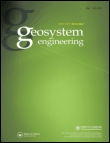
Geosystem Engineering
Transforming challenges into sustainable practices.Geosystem Engineering, published by Taylor & Francis Ltd, is a prominent academic journal focusing on the interdisciplinary fields of Environmental Engineering, Pollution, and Waste Management and Disposal. With an ISSN of 1226-9328 and an E-ISSN of 2166-3394, this journal has been a significant contributor to the scholarly discussions since its inception in 1998 and continues to publish impactful research up to 2024. As a recognized journal within the Q3 category for its respective fields as of 2023, it serves as a vital platform for researchers, professionals, and students aiming to disseminate findings, share innovations, and address pressing environmental challenges. Although it does not currently offer Open Access options, Geosystem Engineering remains essential for those invested in advancing sustainable practices and technologies in geosystems. The journal delivers critical insights that contribute to the development of policies and practices aimed at improving environmental quality and waste management strategies globally.

Environmental Engineering Research
Advancing sustainable solutions for a resilient future.Environmental Engineering Research, published by the Korean Society of Environmental Engineers (KSEE), stands as a pivotal journal in the field of environmental engineering. With an ISSN of 1226-1025 and an E-ISSN of 2005-968X, this esteemed journal has shown remarkable growth since its inception, converging years from 2011 to 2024. The journal is recognized in the Scopus ranking system, holding a position of #46 out of 197 in the Environmental Science category, marking it in the 76th percentile—a testament to its impact and significance in the field. Furthermore, it enjoys a commendable Q2 ranking in Environmental Engineering for 2023. While the journal operates under a traditional access model, its commitment to disseminating vital research and innovative solutions for environmental challenges enhances its appeal to researchers, professionals, and students alike. The Environmental Engineering Research journal invites contributions that advance the understanding and application of engineering principles to environmental issues, providing a forum for scholars dedicated to fostering sustainability and environmental protection.

International Journal of Environmental Research
Innovating solutions for global ecological challenges.Welcome to the International Journal of Environmental Research, a premier publication in the field of environmental science, published by Springer International Publishing AG. With an ISSN of 1735-6865 and an E-ISSN of 2008-2304, this journal has established itself as a vital resource for researchers, professionals, and students committed to advancing the understanding of environmental issues. Since its inception in 2007, the journal has maintained an impressive Q2 ranking in Environmental Science (Miscellaneous) and holds a notable 70th percentile position in the Scopus rankings, reflecting its high-quality contributions and reputation in the academic community. While the journal is not Open Access, it provides a platform for rigorous, peer-reviewed research covering diverse topics in environmental science, thus fostering a collaborative and informed approach to addressing global environmental challenges. Located in Switzerland at Gewerbestrasse 11, Cham CH-6330, the journal is committed to publishing innovative research that informs policy and practice, making it an essential reference point for anyone engaged in the study and management of the environment.
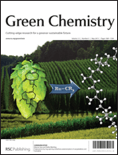
GREEN CHEMISTRY
Exploring the synergy between chemistry and environmental stewardship.GREEN CHEMISTRY, published by the prestigious Royal Society of Chemistry, stands at the forefront of the rapidly evolving field of sustainable chemistry. Since its inception in 1999, this esteemed journal has consistently made significant contributions to environmental chemistry and pollution studies, achieving an impressive Q1 ranking in both categories as of 2023. With a distinguished presence in Scopus rankings, positioned at #10 in Environmental Science _ Pollution and #12 in Environmental Science _ Environmental Chemistry, GREEN CHEMISTRY is recognized for its commitment to advancing research that prioritizes eco-friendly practices and innovative methodologies. The journal serves as a vital platform for researchers and professionals dedicated to promoting sustainability and reducing environmental impact through chemistry, making it an essential resource for anyone interested in the intersection of chemistry and environmental sciences. Although it does not currently offer open access, its significant impact factor highlights its relevance and authority in the field. The journal is located at Thomas Graham House, Science Park, Milton Road, Cambridge, UK, and continues to engage a global audience of scientists and students passionate about green innovations.

Journal of Hazardous Materials Letters
Connecting science and practice to combat pollution challenges.Journal of Hazardous Materials Letters, published by ELSEVIER, is a premier open access journal that has rapidly gained prominence in the fields of Environmental Chemistry, Environmental Engineering, Health, Toxicology and Mutagenesis, Pollution, and Waste Management and Disposal since its inception in 2020. With an impressive categorization in the top quartile (Q1) across all its relevant disciplines in 2023, this journal ranks favorably within the Scopus database, positioning itself in the upper echelons of Environmental Science—ranked 23rd in Environmental Engineering and 19th in Health, Toxicology and Mutagenesis among its peers. It serves as a vital platform for the dissemination of high-quality research focused on addressing hazardous materials and their impacts on health and the environment. The journal's commitment to open access facilitates immediate and broad dissemination of research findings, ensuring that essential knowledge reaches a global audience of researchers, professionals, and students eager to advance the field. With its ongoing convergence into 2024, the Journal of Hazardous Materials Letters continues to drive innovation and influence practice in managing hazardous materials for a sustainable future.

ENVIRONMENTAL ENGINEERING SCIENCE
Driving impactful discoveries in environmental chemistry.ENVIRONMENTAL ENGINEERING SCIENCE is a leading journal published by MARY ANN LIEBERT, INC that provides a platform for pioneering research in the fields of environmental chemistry, pollution control, and waste management. With an ISSN of 1092-8758 and an E-ISSN of 1557-9018, this peer-reviewed journal aims to disseminate high-quality scientific studies that address critical environmental challenges. As evidenced by its 2023 category quartile rankings, it holds a notable position at Q3 in Environmental Chemistry and Pollution and Q2 in Waste Management and Disposal, highlighting its relevance and impact in these domains. Spanning over two decades from 1997 to 2024, the journal is dedicated to fostering innovations and promoting rigorous scholarship that can contribute significantly to sustainable environmental practices globally. Authors and researchers are encouraged to engage with this essential resource, which offers Open Access options to enhance the visibility and reach of their work. For those interested in advancing their understanding and practice within the environmental sciences, ENVIRONMENTAL ENGINEERING SCIENCE is an indispensable journal to consider.
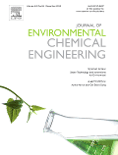
Journal of Environmental Chemical Engineering
Transforming environmental challenges into engineering opportunities.Journal of Environmental Chemical Engineering, published by Elsevier in the United Kingdom, stands at the forefront of integrative research in the field of environmental science and engineering. With an impressive impact factor that places it in the top quartile (Q1) across multiple categories, including Chemical Engineering (Miscellaneous), Pollution, and Waste Management, it serves as a vital resource for researchers and professionals dedicated to advancing sustainable chemical processes and technologies. Since its inception in 2013, this journal has continually focused on fostering innovation and disseminating knowledge that addresses global environmental challenges. With rankings that highlight its influence—22nd in Environmental Science & Pollution and 11th in Process Chemistry & Technology—the journal publishes high-quality articles that span both theoretical investigations and applied research. This dedication to excellence culminates in a comprehensive platform that not only shares significant advancements but also shapes the future directions of environmental chemical engineering.

Frontiers of Environmental Science & Engineering
Connecting research and practice to shape environmental progress.Frontiers of Environmental Science & Engineering is a premier journal published by HIGHER EDUCATION PRESS that stands at the forefront of interdisciplinary research in environmental science and engineering. Established in 2013 and converging its scope through 2024, this journal has swiftly ascended to a notable Q1 category in the Environmental Science (Miscellaneous) segment, highlighting its remarkable impact and relevance. With a Scopus ranking of 27 out of 233 in its field, placing it within the top 88th percentile, it serves as a crucial platform for disseminating cutting-edge research, innovative methodologies, and pressing environmental concerns. Researchers, professionals, and students alike will find valuable insights and opportunities for collaboration within its pages. While the journal operates under a subscription model, its commitment to advancing the field makes it an essential resource for those dedicated to addressing the world's environmental challenges, fostering sustainable practices, and pioneering engineering solutions.
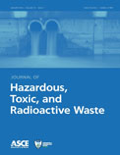
Journal of Hazardous Toxic and Radioactive Waste
Uncovering insights for a cleaner, healthier future.The Journal of Hazardous Toxic and Radioactive Waste, published by the ASCE-American Society of Civil Engineers, serves as a pivotal platform for the dissemination of innovative research in the fields of civil and environmental engineering, focusing on the management and remediation of hazardous materials. With an ISSN of 2153-5493 and an E-ISSN of 2153-5515, this journal has established its reputable presence since its inception, converging years from 2011 to 2025. It operates within esteemed Category Quartiles, ranking Q2 in Chemical Engineering, Environmental Engineering, and several related fields, making it a valuable resource for researchers and practitioners alike. Though not open access, its rigorous peer-review process ensures high-quality and impactful findings, underscoring its significance in advancing knowledge on waste management, environmental chemistry, and public health concerns. As a critical resource for professionals dedicated to addressing the growing challenges associated with hazardous and radioactive waste, this journal invites contributions that push the boundaries of scientific inquiry and practical application.